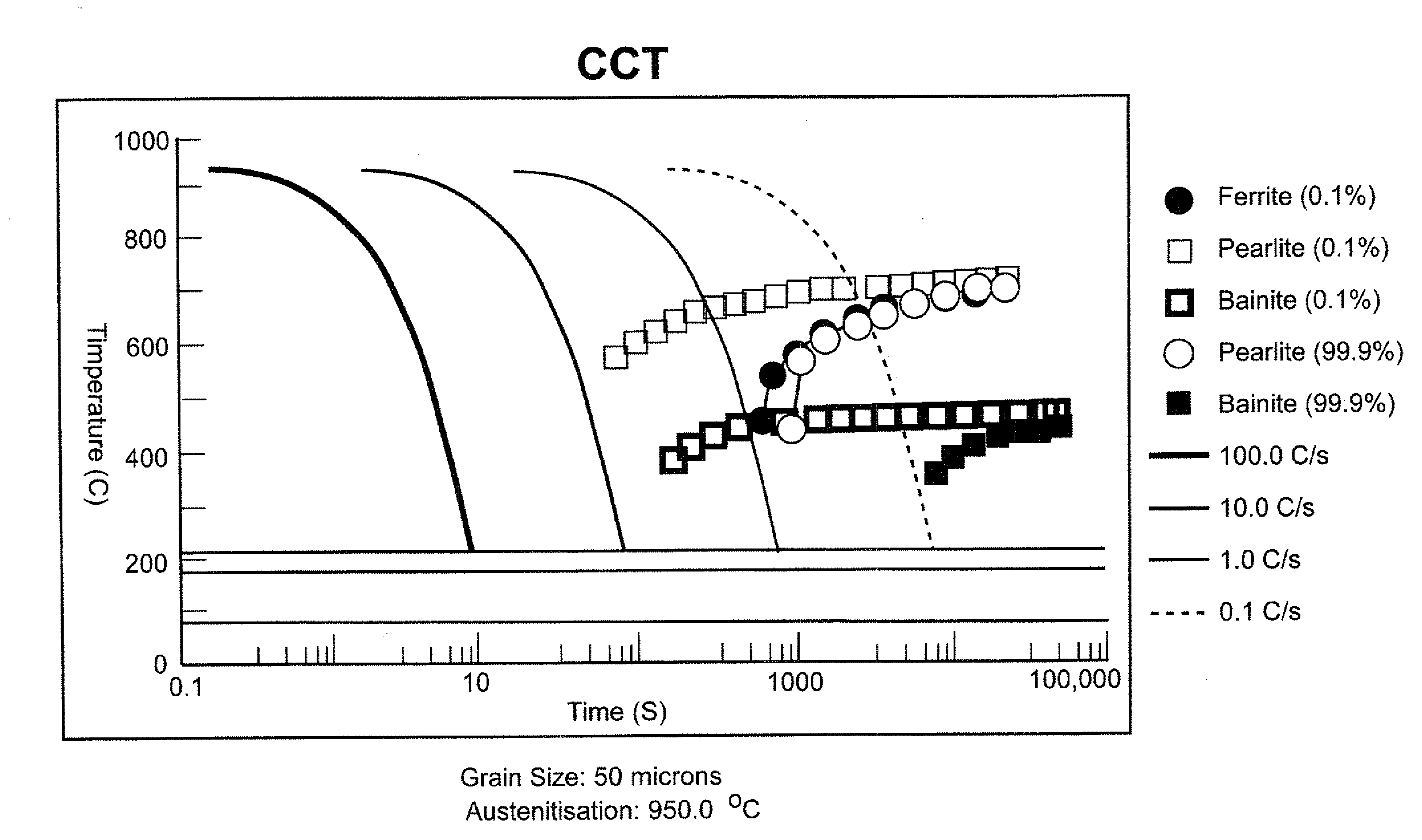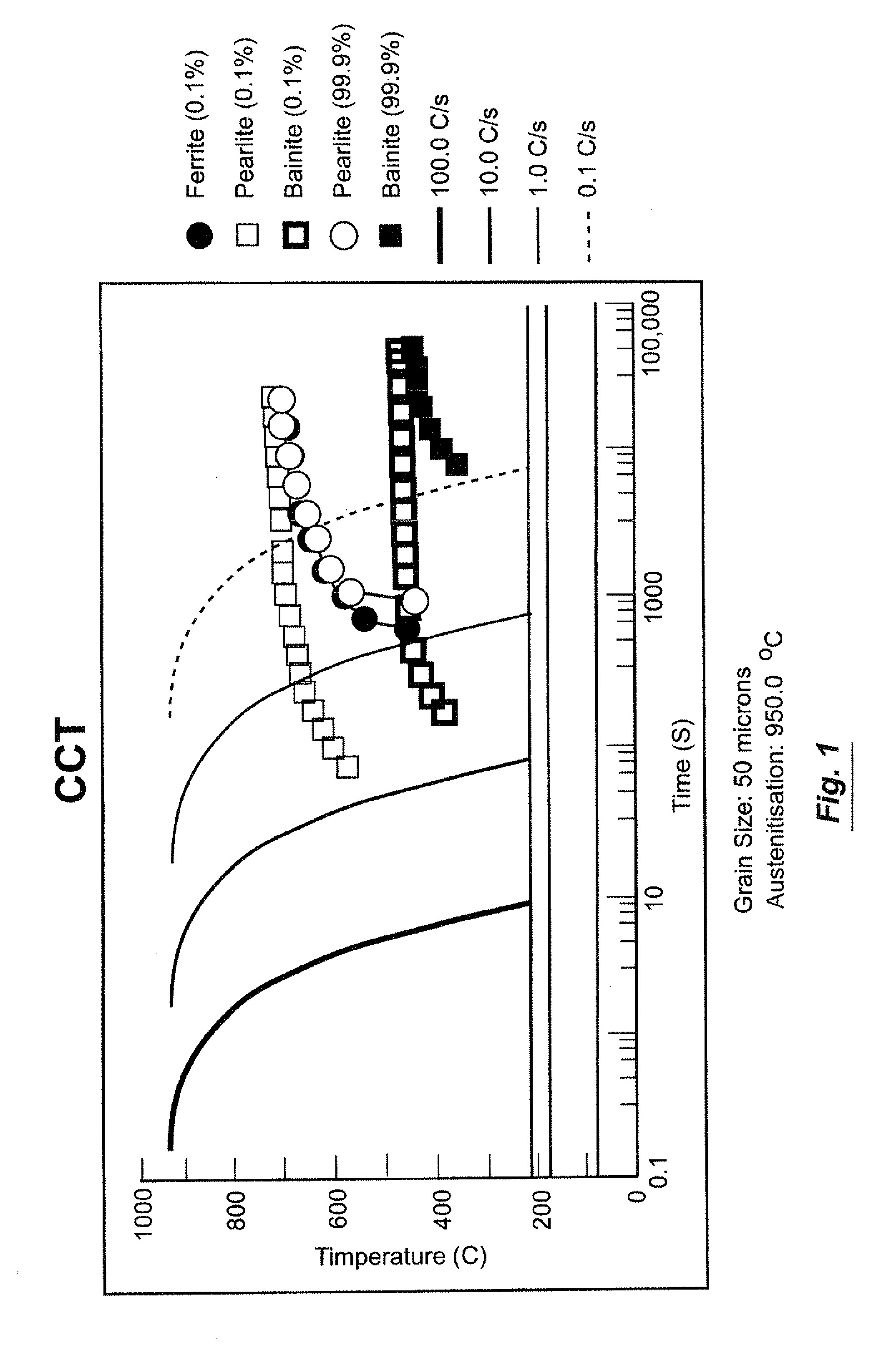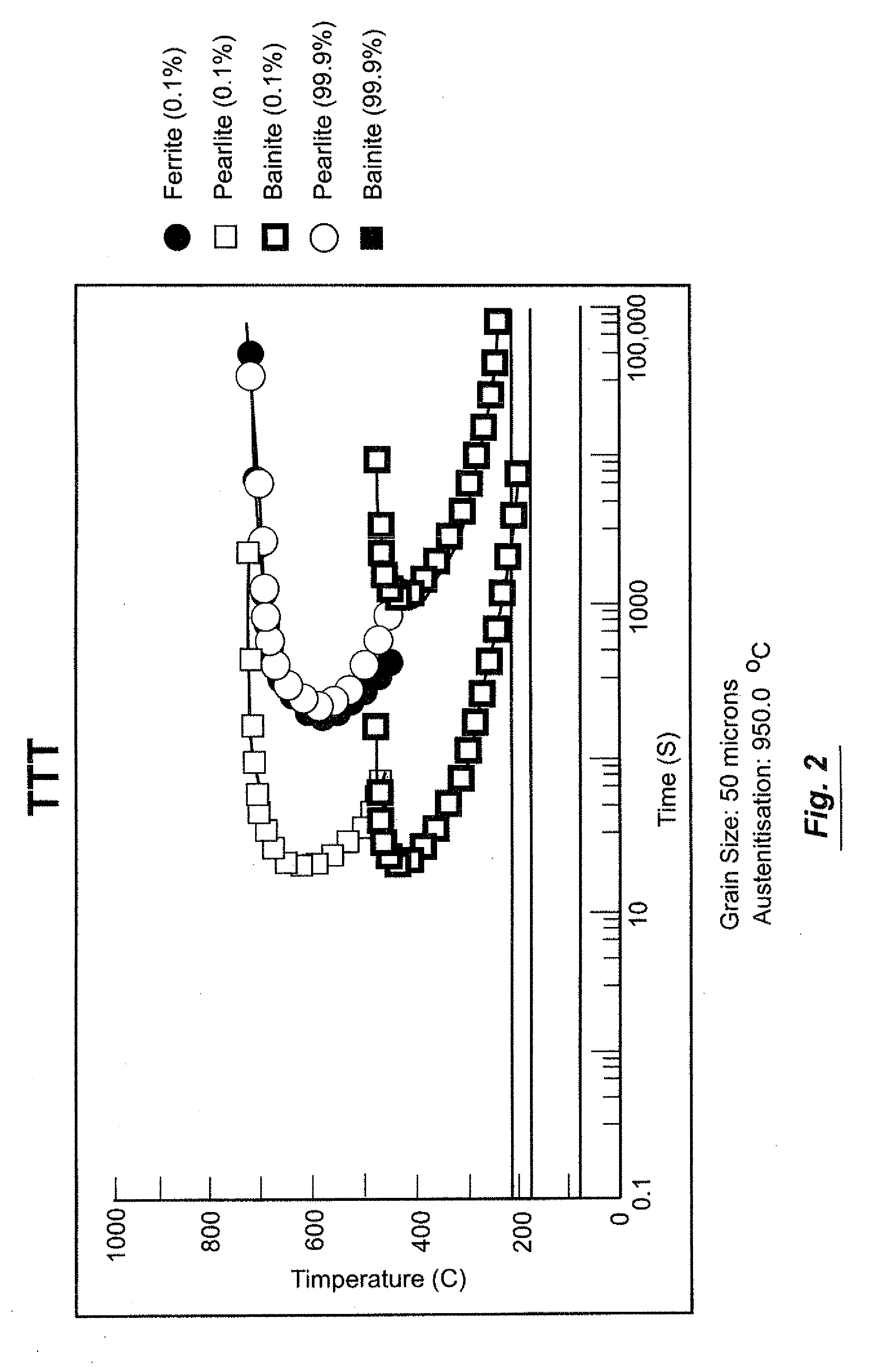Railroad wheel steels having improved resistance to rolling contact fatigue
a technology of rolling contact fatigue and railroad wheels, which is applied in the direction of rail-engaging wheels, transportation and packaging, vehicle components, etc., can solve the problems of steel rail wheels eventually wear out, the thermo-mechanical deterioration of the wheels is often premature, and the thermo-mechanical deterioration is a problem, so as to improve the metallurgical properties
- Summary
- Abstract
- Description
- Claims
- Application Information
AI Technical Summary
Benefits of technology
Problems solved by technology
Method used
Image
Examples
Embodiment Construction
[0051]Applicants have found that the presence of niobium (Nb) in most of the steel formulations of this patent disclosure is usually an especially significant factor in achieving the ends of this invention. That is to say that Applicants have found that niobium is a particularly good grain refiner for these steels and that this grain refinement results in significant improvement in the mechanical properties (e.g., hardness and tensile properties) of these steels. Applicants also have found that the niobium component of these steels acts as a particularly effective austenite stabilizer. This, in turn, serves to prevent formation of a martensite phase—and hence spalling of these steels. Another key point with respect to the presence of niobium in these steels is that a pearlitic transformation of such steels takes place at relatively long austenization times, see for example the continuous cooling transformation (CCT) depicted in FIG. 1 and the temperature time transformation (TTT) de...
PUM
| Property | Measurement | Unit |
|---|---|---|
| Percent by mass | aaaaa | aaaaa |
| Percent by mass | aaaaa | aaaaa |
| Percent by mass | aaaaa | aaaaa |
Abstract
Description
Claims
Application Information
 Login to View More
Login to View More - R&D
- Intellectual Property
- Life Sciences
- Materials
- Tech Scout
- Unparalleled Data Quality
- Higher Quality Content
- 60% Fewer Hallucinations
Browse by: Latest US Patents, China's latest patents, Technical Efficacy Thesaurus, Application Domain, Technology Topic, Popular Technical Reports.
© 2025 PatSnap. All rights reserved.Legal|Privacy policy|Modern Slavery Act Transparency Statement|Sitemap|About US| Contact US: help@patsnap.com



